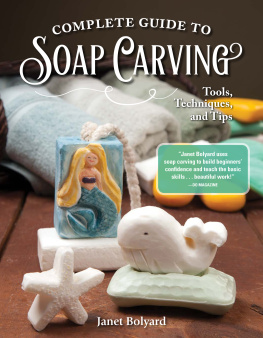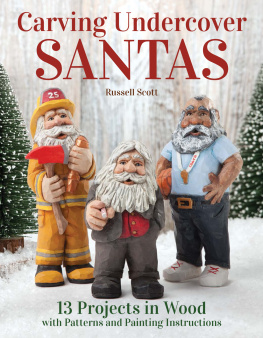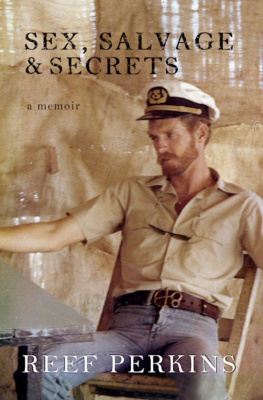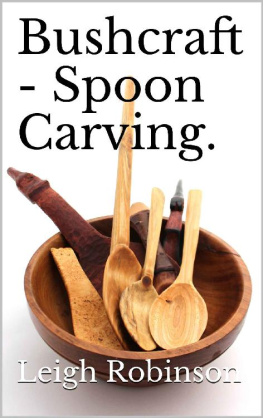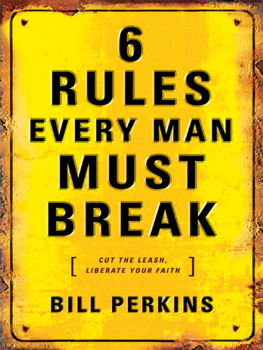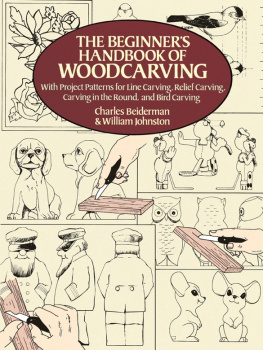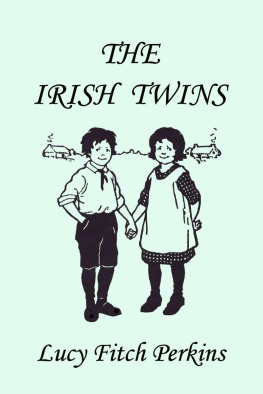Tom Perkins - Art of Letter Carving in Stone.
Here you can read online Tom Perkins - Art of Letter Carving in Stone. full text of the book (entire story) in english for free. Download pdf and epub, get meaning, cover and reviews about this ebook. City: Marlborough, year: 2014, publisher: Crowood, genre: Home and family. Description of the work, (preface) as well as reviews are available. Best literature library LitArk.com created for fans of good reading and offers a wide selection of genres:
Romance novel
Science fiction
Adventure
Detective
Science
History
Home and family
Prose
Art
Politics
Computer
Non-fiction
Religion
Business
Children
Humor
Choose a favorite category and find really read worthwhile books. Enjoy immersion in the world of imagination, feel the emotions of the characters or learn something new for yourself, make an fascinating discovery.
- Book:Art of Letter Carving in Stone.
- Author:
- Publisher:Crowood
- Genre:
- Year:2014
- City:Marlborough
- Rating:5 / 5
- Favourites:Add to favourites
- Your mark:
- 100
- 1
- 2
- 3
- 4
- 5
Art of Letter Carving in Stone.: summary, description and annotation
We offer to read an annotation, description, summary or preface (depends on what the author of the book "Art of Letter Carving in Stone." wrote himself). If you haven't found the necessary information about the book — write in the comments, we will try to find it.
Tom Perkins: author's other books
Who wrote Art of Letter Carving in Stone.? Find out the surname, the name of the author of the book and a list of all author's works by series.
Art of Letter Carving in Stone. — read online for free the complete book (whole text) full work
Below is the text of the book, divided by pages. System saving the place of the last page read, allows you to conveniently read the book "Art of Letter Carving in Stone." online for free, without having to search again every time where you left off. Put a bookmark, and you can go to the page where you finished reading at any time.
Font size:
Interval:
Bookmark:
THE ART OF
Letter Carving
IN STONE
TOM PERKINS

First published in 2007 by
The Crowood Press Ltd
Ramsbury, Marlborough
Wiltshire SN8 2HR
www.crowood.com
This e-book first published in 2014
Tom Perkins 2007
All rights reserved. No part of this publication may be reproduced or transmitted in any form or by any means, electronic or mechanical, including photocopy, recording, or any information storage and retrieval system, without permission in writing from the publishers.
British Library Cataloguing-in-Publication Data
A catalogue record for this book is available from the British Library.
ISBN 978 1 84797 724 3
Acknowledgements
I would like to thank my wife, Gaynor, for her help in seeing this project through, John Neilson for all his help with scanning and arranging many of the diagrams, Christopher Elsey for supplying much of the text on gilding, Sara Millington-Hore for her valuable editorial input and all the letter carvers who have contributed images and written about their work, whose contributions have been invaluable to the book.
Every reasonable effort has been made to trace holders of copyright in illustrations and text reproduced in this book. Anyone holding copyright in a featured work that has not been credited is invited to contact the authors, via Crowood, and we will insert a suitable credit in future printings of this book.
Unless otherwise stated, photographs of processes are by G. and T. Perkins and diagrams by T. Perkins.
Frontispiece: Tom Perkins, V-incised Welsh slate menhir, 2m high, one of five stones, EU-funded commission for the Peddars Way National Trail, Norfolk, 2000. (Photo: Daphne Hoskin)
Let the beauty we love be what we do.
There are hundreds of ways to kneel and kiss the ground.
Jelaluddin Rumi
Our aim should be, I think, to make letters live
that men themselves may have more life.
Edward Johnston
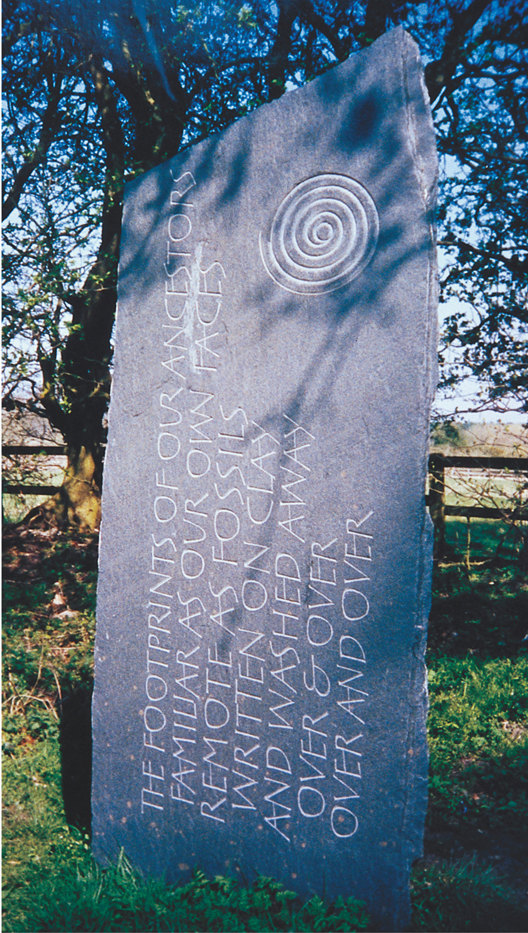
Foreword
People are often surprised that anyone still carves stone inscriptions by hand. Cant you get a machine to do that?, they ask. You can, of course at least up to a point. However, just as a handmade pot is not the same as a mass-produced one, so every part of a hand-carved inscription is the result of a direct, human process. And more than that, the letter carver (in the way the term is used in this book) has designed the letters, and not used someone elses typeface conceived for a different purpose. That, above all else, is what it is about.
There is in fact something of a revival going on in the making of stone inscriptions. A century ago, Eric Gill laid the groundwork for a new breed of studio letter carvers, much as he would have disliked the concept. Though few of his successors proved able to match the standards of design he had set, letter carving nonetheless survived through the second half of the twentieth century. A few determined practitioners (see ) held out against a climate increasingly inimical to hard-won craft and design skills.
Tom Perkins arrived on the scene in the late 1970s and quickly established a reputation as a designer and carver with an original voice. When you look at a piece of lettering carved in stone by Perkins, the word integrity comes to mind, in both its senses of wholeness and honesty. Up close the chisel marks bear the same sense of purpose as the letters themselves. The part is a microcosm of the whole. These are not letters designed to create a superficial look, as a display typeface might. They have a life of their own, springing from their makers rigorous sense of design, itself a product of long reflection, well-absorbed influences and, perhaps, an inherited predisposition to craftsmanship from his shipwright father and several generations of skilled artisans before him. As Gill said in a different context, these letters are things, not pictures of things.
At the age of thirteen, Perkins was introduced to Roman letters by an art teacher, sparking off an all-absorbing interest and giving him a firm sense of what he wanted to do with his life. In 1974 he went to Reigate School of Art to study calligraphy, where he met his future wife, Gaynor Goffe. She tells how Tom would spend every spare moment drawing and painting letters. So by the time he started letter carving at Richard Kindersleys workshop in London, though not yet twenty years of age, he already had a profound knowledge of letterforms. This would deepen further as he became familiar with the chisel. The relatively limited range of forms he now uses is the result of years of experimenting and refining; extracting essence, in the phrase of the potter Hans Coper. Designers of typefaces tend to be more celebrated than letter carvers, not least because their designs are multiplied in millions and often carry their names, but the essence Perkins has extracted from those twenty-six letters bears comparison with the work of the best contemporary type designers.
It will be no surprise to Perkins students that this book does not contain gimmicks or performances designed to impress, but rather seeks to teach by example, homing in on the essentials. It is characteristic that he has chosen to include photographs of the work of other people (several of whom he has himself taught) as well as his own, and to give space to their views.
I had the good fortune to spend nearly a year as Toms assistant. Much as I admire his work, the most valuable gift I take from that time is the sense that the practice of letter carving is more than just playing around with shapes, meeting a clients brief, earning a living or simply perpetuating a tradition. Letter carving is a craft rooted in several basic human preoccupations: language, design and making. This book will help students and practitioners with the technicalities of their work, but will also, I hope, impart something of what has driven its author along a remarkably single-minded path for some thirty years.
John Neilson
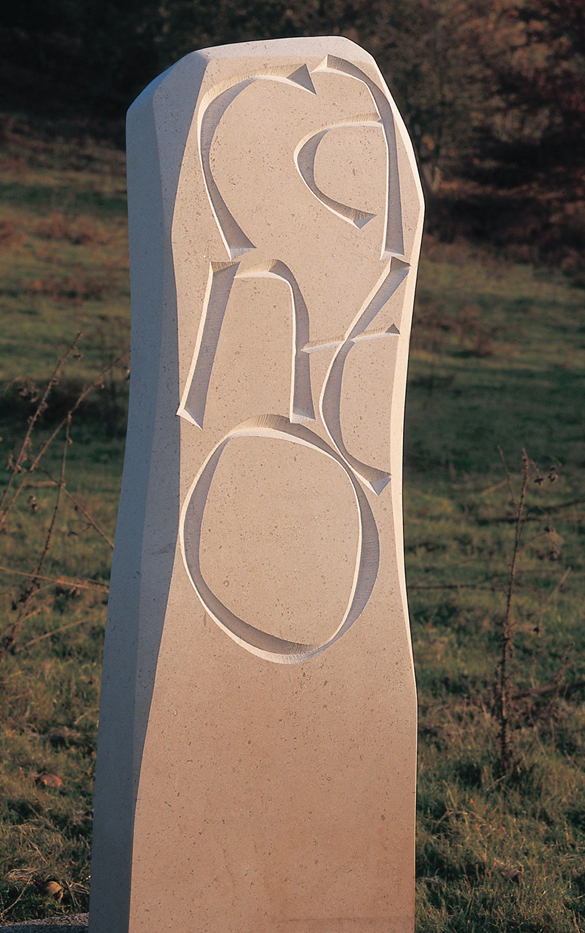
John Neilson, Canto, Hopton Wood limestone. Text in Spanish by artist, also on back (En el canto de la piedra suena el mar: In the song of the stone sounds the sea). Private garden, Somerset, 2004. 122 35 10cm.
Introduction
Letter carving in Britain as practised by artist-craftsmen at the beginning of the twenty-first century is gaining new popularity against a background of decades of sparse educational opportunities in this field. Whilst the classical approach to letterform advocated by Eric Gill is still very much in evidence and continues to provide a sound foundation for those wishing to learn the craft, other approaches are feeding into contemporary practice. This includes the influence of German work, notably that of Sepp Jakob (see pages 23,24) and his colleagues and students. Also, in 1988 the formation of Memorials by Artists (MBA) and Letter Exchange (a society for letterers of all disciplines), further broadened peoples outlook of what was possible in letter carving.
Letter carving in stone is a craft requiring very little in the way of equipment. I remember many years ago sitting in a caf in South Kensington next to David Kindersley after he had spoken at a conference on lettering at the Victoria and Albert Museum. Someone from the Crafts Council was speaking at some length about all the equipment young craftsmen needed in order to set up. Kindersley leant across to me and whispered all you need is a hammer and chisel. Add to that a sturdy wooden easel and a diamond sharpening plate and one has all that is necessary to make a start in letter carving.
Next pageFont size:
Interval:
Bookmark:
Similar books «Art of Letter Carving in Stone.»
Look at similar books to Art of Letter Carving in Stone.. We have selected literature similar in name and meaning in the hope of providing readers with more options to find new, interesting, not yet read works.
Discussion, reviews of the book Art of Letter Carving in Stone. and just readers' own opinions. Leave your comments, write what you think about the work, its meaning or the main characters. Specify what exactly you liked and what you didn't like, and why you think so.



